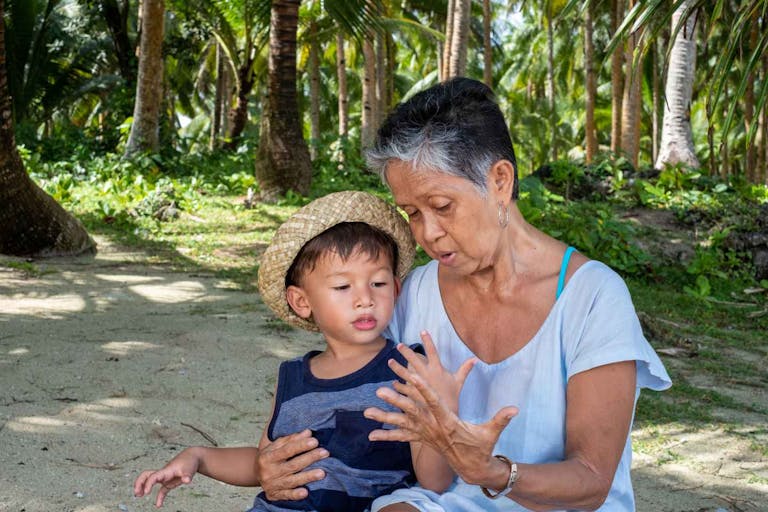
Can IVF ever be ethical? Here are some things to consider.
Nancy Flanders
·
The Philippines faces increasing challenges from low fertility rate and aging population
The Philippines is struggling with a low population growth rate and dropping fertility rates, along with a growing "aging population," which the government is attempting to address.
Reports indicate that fertility rates in The Philippines are suffering as the country also deals with an "aging population."
Nearly all regions of the country are experiencing a population drop.
The government hopes to institute a "whole of government" approach to address issues of population decline.
Recent census figures have disclosed that the population growth rate for The Philippines has dropped from 1.6 percent (2015-2020) to a mere 0.8 percent (2020-2024), mirroring a steady fall in fertility rates.
By 2030, Filipinos aged 65 and more will comprise 7 percent of the population, thus sealing country’s current status as one with an "aging population,” according to a Newsweek report.
The Newsweek report added:
With a fertility rate of around 1.9 births per woman, the country of 116 million is now below the replacement level of 2.1 needed to sustain population growth. While many nations face a similar trend, the Philippines—one of Asia’s youngest countries—grapples with these shifts while lacking the safety nets and health infrastructure that help cushion the blow in wealthier economies.
Newsweek also quoted the Philippine Institute for Development Studies from a 2023 study, which said:
Analyses indicate that the primary driver behind the country’s fertility decline in the last 50 years is the enhancement of material measures of well-being, with marriage and contraceptive usage playing secondary roles.
The Philippines will join countries like Japan and South Korea that are encountering demographic winters, though it still lags behind these "super-aged" societies. Nonetheless, lawmakers have to face the reality that the Philippines lacks similar social, health, and educational resources to properly address the needs of an aging population.
Article continues below
Dear Reader,
Have you ever wanted to share the miracle of human development with little ones? Live Action is proud to present the "Baby Olivia" board book, which presents the content of Live Action's "Baby Olivia" fetal development video in a fun, new format. It's perfect for helping little minds understand the complex and beautiful process of human development in the womb.
Receive our brand new Baby Olivia board book when you give a one-time gift of $30 or more (or begin a new monthly gift of $15 or more).
In remarks cited by the Philippine Inquirer, the country’s Commission on Population and Development (CPD) Deputy Executive Director Lolito Tacardon stated that an aging population would be challenging for the government, as the latter is “still in the process of implementing, for example, universal health care.”
By 2050, Tacardon said the trend of an aging population may reach its “peak” with around 12 percent of Filipinos aged 65 years and older. Tacardon highlighted that 16 out of the 18 regions in the Philippines faced a drop in population growth rate, with the Bicol region reporting a negative population growth.
In view of these prospects, the Philippine government is pushing for a "whole-of-government" approach that leverages on the workforce, population conditions permitting, by investing in human capital and economic initiatives that generate jobs and opportunities, fostering cooperation across agencies and sectors.
As can be seen, the Philippines' declining birth rate and aging population indicate key societal transformations in the long haul.
While the government should tackle existing problems pertaining to labor force sustainability, economic security, and social services, it should also foster pro-life values promoting family, respect for the sanctity of all human life, and inter-generational solidarity.
Live Action News is pro-life news and commentary from a pro-life perspective.
Contact editor@liveaction.org for questions, corrections, or if you are seeking permission to reprint any Live Action News content.
Guest Articles: To submit a guest article to Live Action News, email editor@liveaction.org with an attached Word document of 800-1000 words. Please also attach any photos relevant to your submission if applicable. If your submission is accepted for publication, you will be notified within three weeks. Guest articles are not compensated (see our Open License Agreement). Thank you for your interest in Live Action News!

Nancy Flanders
·
International
Angeline Tan
·
International
Bridget Sielicki
·
International
Cassy Cooke
·
Guest Column
Stefano Gennarini, J.D.
·
International
Angeline Tan
·
International
Angeline Tan
·
International
Angeline Tan
·
International
Angeline Tan
·
International
Angeline Tan
·
Human Interest
Angeline Tan
·